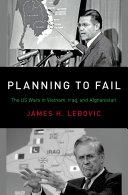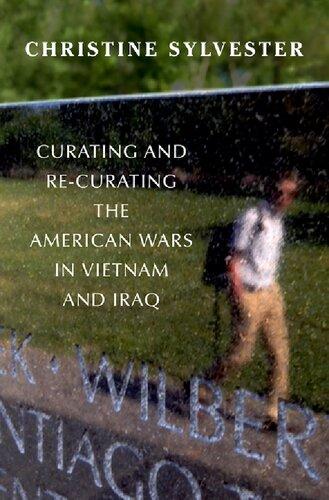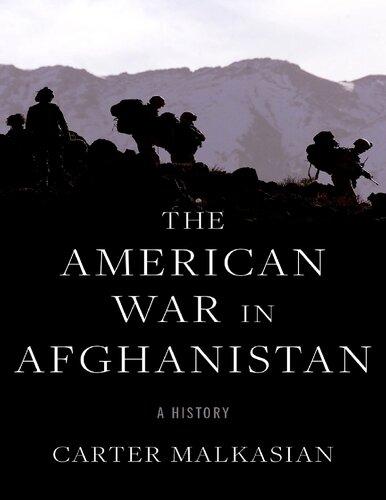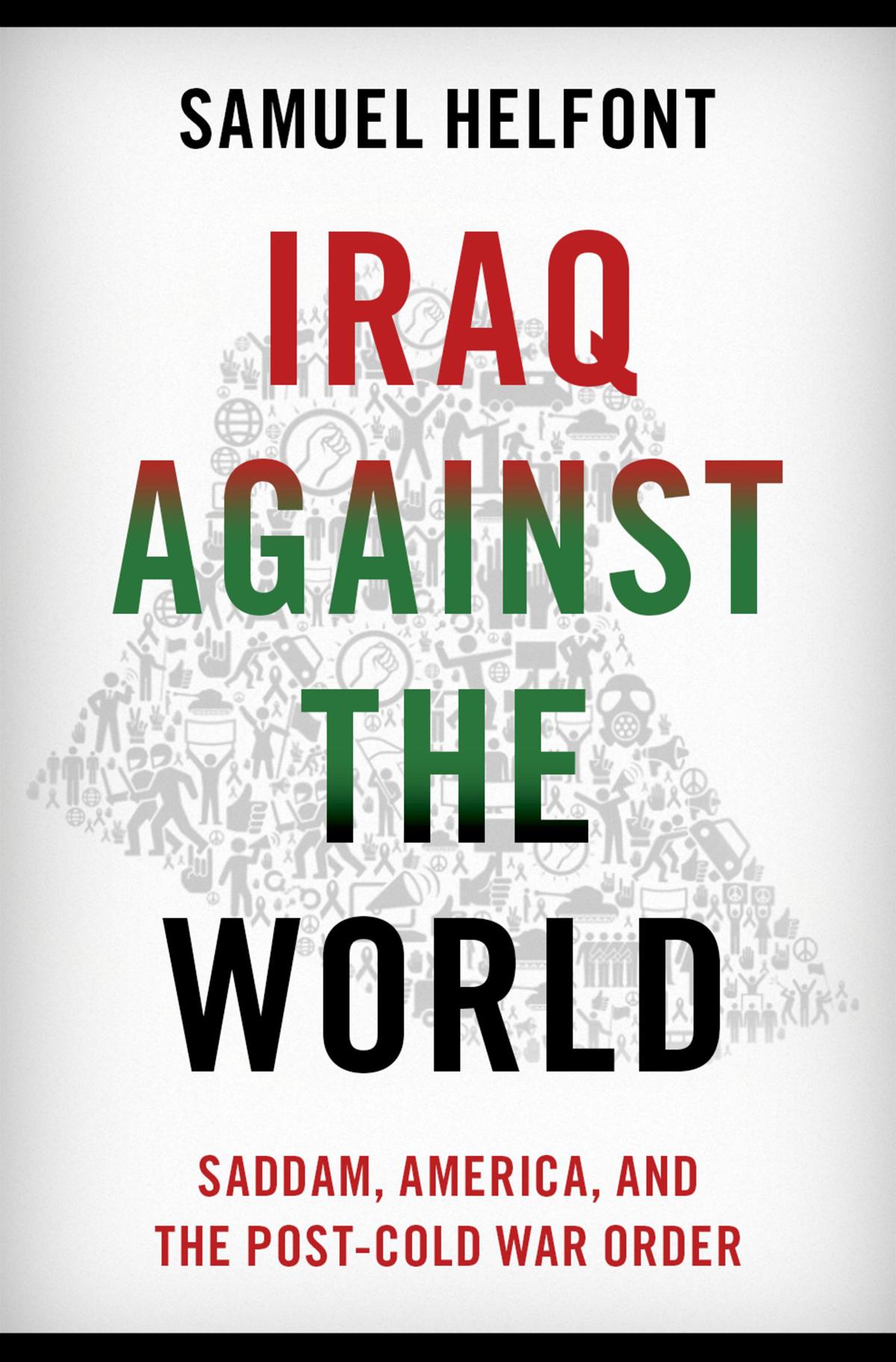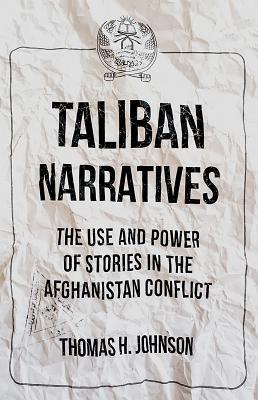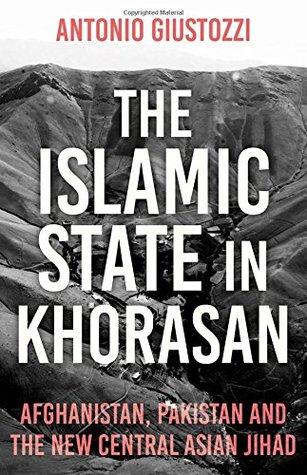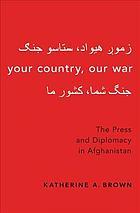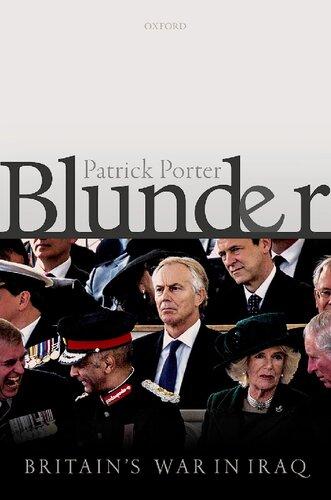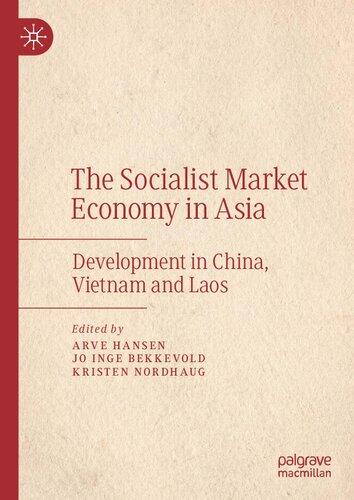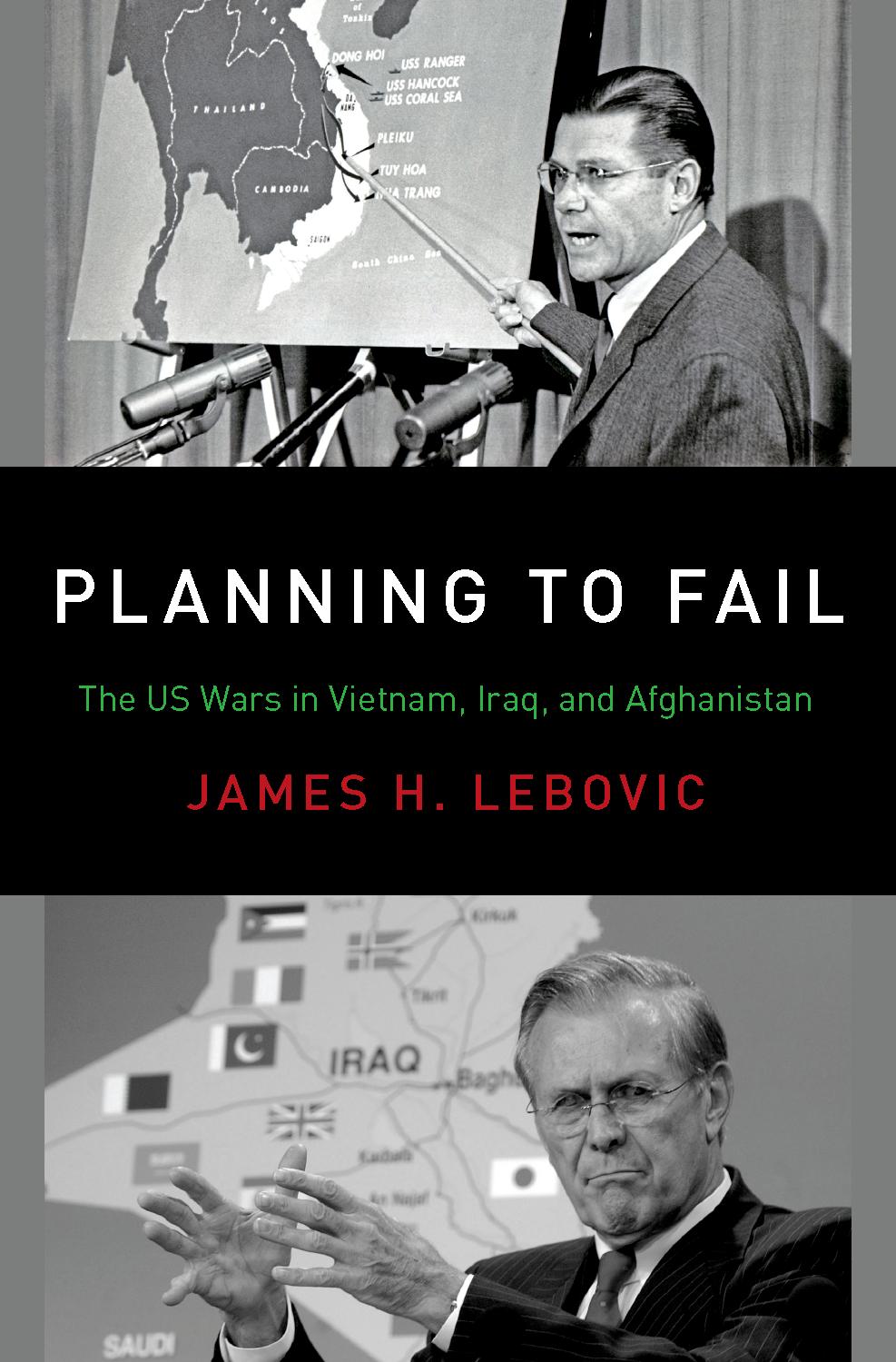Planning to Fail
The US Wars in Vietnam, Iraq, and Afghanistan
JAMES H. LEBOVIC
Oxford University Press is a department of the University of Oxford. It furthers the University’s objective of excellence in research, scholarship, and education by publishing worldwide. Oxford is a registered trade mark of Oxford University Press in the UK and certain other countries.
Published in the United States of America by Oxford University Press 198 Madison Avenue, New York, NY 10016, United States of America.
© Oxford University Press 2019
All rights reserved. No part of this publication may be reproduced, stored in a retrieval system, or transmitted, in any form or by any means, without the prior permission in writing of Oxford University Press, or as expressly permitted by law, by license, or under terms agreed with the appropriate reproduction rights organization. Inquiries concerning reproduction outside the scope of the above should be sent to the Rights Department, Oxford University Press, at the address above.
You must not circulate this work in any other form and you must impose this same condition on any acquirer.
Library of Congress Cataloging-in-Publication Data
Names: Lebovic, James H., author.
Title: Planning to fail : the US wars in Vietnam, Iraq, and Afghanistan / James H. Lebovic.
Other titles: US wars in Vietnam, Iraq, and Afghanistan
Description: New York, NY : Oxford University Press, [2019] | Includes bibliographical references.
Identifiers: LCCN 2018032423 | ISBN 9780190935320 (hc : alk. paper)
Subjects: LCSH: United States—Military policy—Decision making—Case studies. | National security—United States—Decision making—Case studies. | Vietnam War, 1961–1975. | Iraq War, 2003-2011. | Afghan War, 2001– | United States—History, Military—Case studies.
Classification: LCC UA23 .L4477 2019 | DDC 355.020973—dc23 LC record available at https://lccn.loc.gov/2018032423
1 3 5 7 9 8 6 4 2
Printed by Sheridan Books, Inc., United States of America
CONTENTS
Preface vii
Acknowledgments ix
1. The US Wars in Vietnam, Iraq, and Afghanistan 1
2. The Vietnam War, 1965–1973 17
3. The Iraq War, 2003–2011 64
4. The Afghanistan War, 2001–? 119
5. Three Long and Costly Wars: What Can We Learn? 181
Notes 193 References 221 Index 233
PREFACE
This book, fifty years in the making, assesses US decision-making in the Vietnam, Iraq, and Afghanistan conflicts, the three longest US wars of the post–World War II period. Those who speak of the Iraq and Afghanistan Wars often dismiss Vietnam as the exception or an aberration. But the Vietnam War serves as an essential introduction to the deficiencies of US wartime decision-making. In the Vietnam War, like its successors, US decision makers struggled less than they should have when conditions permitted good choices, and then struggled more than could matter when conditions left them with only bad choices.
History, finally, is what we make of it. To repurpose William Faulkner, “The past is never dead. It’s not even past.”
ACKNOWLEDGMENTS
I started this book early in the second term of the Obama administration. A book on the challenges of US decision-making in the Vietnam, Iraq, and Afghanistan Wars seemed a fitting companion to the book on the limits of US military capability in the Vietnam and Iraq Wars that I had completed in Barack Obama’s first year in office.
As I wrote, I profited enormously from conversations with my department colleagues, often in discussions on seemingly unrelated subjects. I owe special thanks to Elizabeth Saunders for her willingness to talk about all things Vietnam— and Iraq, and occasionally even Afghanistan. Steve Biddle also deserves mention in that regard. He contributed to this book in ways he does not appreciate. Steve lectured on the Iraq surge to my undergraduate seminar, The United States at War, eight semesters in a row, providing me each time with new insights on decisionmaking in that crucial period. Perhaps his biggest contribution to this book came, however, at a public session, when he warned against the temptation to make low cost the overriding consideration in deciding among wartime options. I hope he does not mind that I enshrined his cautionary advice here in a “stage of conflict.”
Outside of George Washington University, I gained useful perspective and information from a lengthy discussion (via email) about the Iraq surge with Peter Feaver. I appreciate the time he took answering my questions and providing answers when I did not realize I should have had questions. Also deserving thanks for helpful feedback are James Morris for his comments on a manuscript draft (and suggestions for a book cover) and the participants on my panel at the 2016 conference of the International Security Studies Section and International Security and Arms Control Section (of the International Studies Association and American Political Science Association, respectively), where I presented the theory from this book. I owe a special debt to the academic editors of the new Bridging the Gap series—Jim Goldgeier, Bruce Jentleson, and Steve Weber—and two anonymous reviewers for their extremely useful comments on early drafts of this manuscript. I also express my appreciation to Dave McBride, my editor at Oxford University Press, for seeing
value in this manuscript and, along with Holly Mitchell, helping to shepherd it through the publication process.
Finally, I wish to acknowledge my wife Holly for the opportunity and support she gave me to complete this project. We never actually discussed the book. But some things in life are more important than in-house, manuscript feedback. If the truth be told, I live quite comfortably without it.
Wartime Decisional Bias: The Primacy of Means
My basic argument is simple: policy makers are myopic. They craft polices around visible elements as if they were the whole picture. Because overarching policy goals are distant and open to interpretation, policy makers ground their decisions in the immediate world of short-term objectives, salient tasks and tactics, policy constraints, and fixed time schedules. In consequence, they exaggerate the benefits of preferred policies, neglect their accompanying costs and requirements, and ignore beneficial alternatives. These tendencies, though pervasive in decision-making, become disabling problems in the complex environment of asymmetric conflicts. With their many interdependent parts, these demanding environments confound planning and tax resources. The result—in Vietnam, Iraq, and Afghanistan—was shortsighted, suboptimal policies that failed to live up to ever-diminishing expectations.
Drawing from studies of psychological and organizational behavior, I assume individuals employ indicators to gauge the effects of proximate goals that serve, in turn, as surrogates for more abstract goals (March and Simon 1993; Steinbruner 1974). I draw also from cognitive research (Jervis 1976; Kahneman and Tversky 1979; Levy 1997; McDermott 2001) that highlights the stability of beliefs and explores heuristics by which individuals make decisions “quickly and frugally” (Gigerenzer and Gaissmaier 2011: 455). These studies establish that individuals, in opting for salient (or “available”) referents to understand complex policy problems, defy the principle of rational value maximization. They do not consider their goals, much less evaluate their importance, compatibility, or feasibility. Nor do they search dutifully for policy alternatives, seek information necessary to assess those options, or choose logically and systematically from among them to maximize gains, reduce risks, or minimize costs. They anchor their decisions instead in referents that define the decisional problem.2
To be sure, any number of heuristics might account for the decisional failings of a policy maker or group at a given stage in a conflict. The suspect heuristics include the framing of decisions, the structure and particulars of competing options, how and when information becomes available (i.e., the manner and order of its presentation), the fact of prior losses or gains, and the illogical processing of probabilistic information. For instance, an option’s deficiency on but one dimension can bias decisions toward an alternative that, by contrast, performs well on that dimension, or a middle option can appear more viable when juxtaposed with extreme alternatives (McDermott 2001: 24–25).3
A rich variety of heuristics can account for the thinking of particular decision makers at critical junctures in the Vietnam, Iraq, and Afghanistan Wars. I seek the explanatory and predictive benefits, however, of a macro approach that focuses analysis on persistent or recurrent cognitive influences on governmental behavior.4 I argue that—across decisional bodies and throughout these wars—immediate
The US Wars in Vietnam, Iraq, and Afghanistan 3 goals, critical tasks, mission costs, and time schedules (as salient referents) supplanted broad-based goals.5 Biased decisions (and non-decisions) helped create the strategic and political conditions (with accompanying referents) that influenced decisions in the next stage of these conflicts.
I accept that a number of factors could mitigate or exacerbate such decisional bias. These factors, long touted by international politics theorists, include a country’s level of power, democratic governance, bureaucratic politics and competition, and organizational traditions and practices. Because these factors might promote or reduce bias, depending on the circumstances, their explanatory impact nonetheless remains unclear.
Enormous power arguably positioned the United States to pursue global interests and accept global responsibilities and to act with necessary deliberation and restraint. Big decisions provoke painful questioning and introspection (as time permits); reversible or low-stake decisions come more easily, with little thought for the consequences of failure. The process by which people decide whether to undergo a surgical procedure differs substantially from the process by which most people decide where to go for lunch. Yet such power also gave US leaders a cushion, safety net, or margin of error to survive mistakes, which permitted US leaders to act (in Vietnam, Iraq, and Afghanistan) without duly considering the pros and cons. Likewise, the democratic character of a government might ameliorate wartime decisional bias or make it worse.6 Bias might decline if open and accountable governance exposes decision makers to divergent points of view. Diverse opinions are introduced, for instance, when US presidents create a “coalition of rivals” by bringing political opponents into government; when they construct a broad tent in pursuit of bipartisan policies; or when they weigh options carefully (with input from policy and intelligence professionals), out of fear that the public will punish policy failure at the ballot box. Yet an open government, with widespread participation in policy, can have the opposite effect. It can lead instead to policy stalemate; a diffusion of authority that leaves no one in charge; or lowest-common-denominator policies meant to appeal to various constituencies, not serve policy goals.
Bureaucratic politics and organizational dynamics within government can similarly yield conflicting effects. Bias lessens when bureaucratic competition provokes constructive debate and a free flow of information or when organizational cultures, traditions, and practices—honed through professional experience and expertise—influence policy. Bias ensues, however, when the relative capability of the contenders, not the quality of ideas, determines who wins and who loses the argument.7 Bias afflicts policymaking too when maintaining organizational traditions and observing past practices quash innovation and useful dissent.
Stronger evidence suggests that, apart from these other influences, a myopic bias blinds policy makers to the (bad) consequences of their choices. Indeed, such bias helps account for the decisional impact of factors such as national power. For example, it tells us why US policy makers exaggerated US power in the “bipolar” and
“unipolar” systems of the postwar period.8 An illusion of US power thus led US decision makers into conflicts that presented unexpected challenges. Only with time would US policy makers recognize that even vast US assets could not procure wins against ostensibly weak opponents.9 The power asymmetry favoring the United States in Vietnam, Iraq, and Afghanistan proved elusive against local adversaries capable of using unconventional tactics to their advantage. The US failure to achieve a satisfactory outcome under these circumstances prolonged the conflict, deepened the country’s involvement, and absorbed available resources, even as it created conditions that permitted bias to thrive.
A myopic bias can work in tandem with other forms of psychological bias. Take, for example, the “chasing of sunk costs” that has policy makers yielding to the non-rational logic that “we’ve sacrificed too much to quit.” By this logic, they seek to recover losses, not weigh the marginal return on the additional units invested. They might even exaggerate the value of units lost relative to the potential benefits of some alternative course of action (Kahneman and Tversky 1979; Levy 1997; McDermott 2001). Yet a misplaced focus can bolster these tendencies. Chasing sunk costs seems a viable approach to policy makers because they focus excessively on immediate problems, solutions, and constraints, neglecting long-term goals.
The Stages of Wartime Decision-Making
Critiques of wartime decision-making center on the decision to go to war. Lost in these analyses, however, is the fact that how combatants choose to fight—whether and how they understand their initial goals and adapt later to adversary tactics and the wartime environment—critically affect military outcomes. A war is not necessarily “lost” when states choose war, ill advisedly, over potential alternatives, nor is it “won” when propitious conditions at the onset of battle promise a favorable result.
The prelude to war is undoubtedly a major part of any path-dependent explanation of wartime outcomes. Because the decision to go to war sets the basic parameters (the “where, why, and how”) of the mission, the decision to fight is more consequential, in almost all respects, than decisions to change strategy, reallocate resources, or escalate or de-escalate a conflict. Moreover, policy makers invest politically and psychologically in initial decisions and resist changes in course that they believe, or their opponents will think, amount to conceding failure. Still, policy makers make consequential decisions (and non-decisions) at each of four stages of a conflict. For reasons of bias, policy makers might extend or expand the mission in its early stages; pursue the mission in some abbreviated, suboptimal form in a later stage; or finally, interpret the mission to serve an exit from the conflict. These decisions exacerbate performance challenges, waste and divert available resources, limit future choices, prolong the conflict, and lead eventually to exhaustion.
Stage I
Policy Choice: Engagement of Military Forces
Decision Dynamic: Fixation (Focus on Immediate Mission Goals)
Stage I, the engagement phase, commences when immediate mission goals come together in a war plan. The unmet challenge in policymaking, however, is aligning war plans with broad policy goals. In Vietnam, near-term goals were imprecise, nonconsensual, and eternally malleable. Still, these goals, which centered on efforts to punish the enemy and prevent it from making any gains, loomed larger than fundamental purposes of the US mission. In planning for the US operations in Iraq and Afghanistan, US policy makers were far more attentive to the proximate goal of regime change than to how it might serve (or undermine) US regional and global objectives. That would prove a critical deficiency as ensuing challenges tested US forces, and confounded US officials, when the governments in both countries fell.10
The unanswered question in all three conflicts, however, was, “How exactly would immediate goals serve broader national purposes?” Policy makers saw little reason to explore policy alternatives or to probe the potential negative consequences of their own preferred options.
Stage II
Policy Choice: Extension of Military Operations
Decision Dynamic: Disjunction (Focus on Separate Tasks, Apart from Implementation)
Stage II commences when government leaders extend or expand the mission, having accomplished, or failed to accomplish, their immediate goals. At this point, civilian leaders are twice encumbered. First, in conducting some core set of tasks— aerial bombing, remaking a host country’s institutions, attacking insurgents, and the like—they inadequately attend to broad mission goals. In effect, they allow these tasks to replace these goals. Second, they stand distant from the battlefield, detached from wartime operations and realities and deferent to government officials and organizations charged with implementing policy. Thinking about policy remains undeveloped and fails to cohere (vertically or horizontally) within government. Thus, what passes for strategy amounts to less than the sum of its parts.
Stage II does not follow inevitably from stage I. With or without initial success, policy makers can exercise options. They might choose, for instance, to exit the conflict. The George H. W. Bush administration did just that in the 1991 Desert Storm Operation when it decided not to pursue Iraqi troops fleeing Kuwait. Conversely, policy makers might try to build on prior “success” by expanding the mission. In 1950 the Harry S. Truman administration took that path in Korea: once the US-led
United Nations force sent North Korean troops into retreat, Truman chose to resolve the dispute forcefully—and permanently—by unifying Korea, throwing the war into an eventual stalemate.11 In 2003 the George W. Bush administration chose similarly to build on its success in overthrowing the Iraqi regime by attempting to remake Iraqi governing institutions in the Western image. Spurning both alternatives, policy makers might opt for a middle path. They might persevere, doing more of the same, to avoid the costs and risks of escalation or departure. The Lyndon B. Johnson administration chose that course in Vietnam when a limited bombing campaign and the introduction of ground troops failed to produce concessions from the adversary.
Whatever the course, the decisions can have a rational basis. Leaders might expand their immediate goals, for example, after determining (quite rationally) that meeting them requires accomplishing additional goals or will create opportunities to serve still others. For that matter, they might recognize, correctly, that expanding or extending the war is the cost-effective strategy. All things being equal, building on prior action is often cost effective, by merit of the prior investment.
Yet enlarging the mission can also stem from non-rational influences. Social scientists recount a litany of non-rational factors that can induce undue boldness (risk acceptance) or extreme caution (risk averseness) in decision-making and can blind participants entirely to the requirements of success, available options, their consequences, or the actual costs and risks of defeat. These influences include the perversities of group decision-making, known as “groupthink” (Janis 1982); wishful thinking and tunnel vision; the misapplication of historical analogies; anchored thinking; the inappropriate reading of probabilistic information; and the numerous psychological maladies that stem from motivated and unmotivated bias (Yetiv 2013). Non-rational influences also include the chasing of sunk costs and risk-taking when experiencing losses. These pervasive influences are behind the familiar refrain that missions tend to expand beyond sustainable levels, a phenomenon known widely as mission creep (Adams and Shoon 2014). The belated US shift in policy toward nation-building in Iraq stands as the virtual “poster child” for the argument that missions tend to grow beyond the will and capability to support them.12
At this stage in a conflict, civilian leaders are unlikely to have a well-developed plan should they decide to extend or expand the mission. Having fixated on immediate goals in the prewar period, they will not have fully considered the implications of failure, the opportunities and challenges of expanding or extending mission purposes, the links and trade-offs among these purposes, or the practical requisites of preferred policies. Adding to these failings, structural conditions distance leaders from both wartime realities and government organizations charged with policy implementation.13 Leaders might not know that implementing organizations have sidelined some mission elements, pursued them only as preexisting procedures or country conditions allowed, or effectively redefined the mission by establishing guidelines (making “small” executive decisions) or relying on long-standing
The US Wars in Vietnam, Iraq, and Afghanistan 7 organizational practices. Indeed, leaders might not know that these organizations are struggling to achieve progress despite their resources, training, experience, personnel, and tactical know-how. The struggles might stem from a lack of preparedness, complications on the ground, or from poor coordination among organizations that diverge in their understandings of a mission and approaches to it. One organization might duplicate or contravene the actions of another or allow vital tasks to languish, having mistakenly assumed that some other organization would pick up the slack.
Leaders can certainly try to overcome the gap between declared policy and practice, yet they operate from a fundamental disadvantage. They must evaluate policy from a distance using supplied information, standard indicators, anecdotal evidence, or mixed news that ambiguously signals net gains and losses. They lack the access and specialized knowledge to grasp the intricacies of military planning, strategy, tactics, and performance; to recognize the full resource demands of an operation and the limited supply of capability; or to appreciate when and how US responses to war zone challenges might compromise policy goals. Through ignorance and indifference, they empower subordinates by default.
Stage III
Policy Choice: Limitation in Resources Committed Decision Dynamic: Constriction (Recognize Limits, Focus on Cost Constraints)
Compounding challenges threaten to undermine all a president has sought to accomplish at home and abroad. Problems on the war front, tight resources, competing priorities, and declining public support now press visibly and immediately. Stage III commences when government leaders reach their limit. They recognize impediments to wartime success and restrict the resources available to the mission.
These constraints were apparent in 1967, when President Johnson (and Secretary of Defense Robert McNamara) set a ceiling of (roughly) half a million US troops in Vietnam. Indeed, these constraints were apparent in early 2007, when President Bush announced a US troop increase (the “surge”)—a desperate effort to suppress the violence in Iraq—knowing that the US military could not long sustain those force levels. They were apparent as well in 2009, when President Barack Obama ordered a US troop surge in Afghanistan with a dictate that US forces commence a withdrawal eighteen months later.
US leaders took these actions, perhaps feeling hopeful, but never sanguine, about the likely outcome. President Johnson imposed his limit recognizing that at current strength US forces could not win in Vietnam in the foreseeable future. President Bush knew the surge was but a short-term fix—a Hail Mary pass of sorts—that if
successful would still leave Iraq on the precipice of failure. President Obama set his force and time limits without a clear sense of what would constitute military success or failure a year and a half later. Indeed, these leaders accepted a cap on resources that could well impose additional costs by constraining future choices.
To be sure, a president can rationally cap an investment when resources become scarce, other priorities beckon, or the investment offers limited marginal returns. But rationality is impugned when cost curtailment—that is, getting the price down— becomes a driving and decisive factor in decision-making. At this point in the conflict, escalating involvement or exiting entirely might constitute better options.
Stage IV
Policy Choice: Disengagement of Military Forces
Decision Dynamic: Extrication (Prioritize Exit, Focus on Time Constraints)
Stage IV commences when rising costs and dwindling war support push policy makers to exit the conflict. Although they might strive for a graceful departure or reengage (even escalate the conflict) for abbreviated periods, “leaving on schedule” is now an overriding objective.
The war, around which much of the public rallied with the initial intervention, has now lost substantial support. Indeed, declining public support could produce an electoral mandate for change. Both President Richard M. Nixon and President Obama entered office unshackled; that they did not “own” their predecessor’s policies eased the steps toward the door. Whether the impetus for change comes from the public or passes from elites to the public, the policy focus shifts to evacuation.
Consequently, policy makers turn their attention to establishing exit timelines, sticking to them, and coining justifications to cover the exit. Departure milestones are set without regard for the state of the conflict, efficient resource use, or the capability of allied forces to take charge. Policy makers might speak of a mission accomplished, the transferring of responsibility to local forces, or constraints that limit US options. Or they might try somehow to obscure the fact of retreat by blaming allies or local forces, handing over responsibilities to an international organization, escalating militarily for short-term gains, highlighting the achievement of some finite set of goals, or redefining the security problem to allow for an exit (on these strategies, see Tierney 2015: 224–228). Yet any such device thinly masks a palpable reality: withdrawing from the conflict has become the objective.
Leaving is plausibly the rational course here, at the point of exhaustion. Yet rational explanations for the pace and timing of departure fall short. Why did policy makers invest so heavily in a losing venture rather than hedge their bets, change strategies, or seek an earlier exit from the conflict? No less significantly, why would policy makers abandon their effort rather than plan to make efficient use of available
9 resources in the time that remains or even extend the operation—somehow, in some way—to accomplish key objectives?
Contributory but Incomplete Explanations
To recognize that policymaking conforms to a means- driven process is not to deny the direct explanatory contribution of the psychological, organizational/bureaucratic, and political factors that foreign policy analysts have long credited with influencing the behavior of government leaders and officials. These factors nonetheless remain deficient explanations for lapses in national security decision-making.
Psychological Influences
That the beliefs of government leaders and officials bias their judgments, surviving logical and evidentiary challenges, amounts to a truism in the psychologically oriented foreign policy literature. The underlying principle is simple: “Beliefs are quick to form and then resist change.” The resiliency of beliefs is attributable in part to cognitive bias, in which individuals unconsciously filter evidence and mold it to serve their preexisting beliefs. The accompanying cure is shock treatment: a surprising development or barrage of evidence that challenges the beliefs. By contrast, motivated bias—active resistance to arguments and facts that challenge coveted beliefs—acquires strength through confrontation. Individuals rationalize, discount the source of the information, look actively for confirmatory evidence, and interpret facts to support their own prior thinking—anything to salvage those beliefs.
Yet attributing the failings of policymaking to psychological bias invites a host of criticism, for good reason.14 First, studying the beliefs of individual decision makers typically shifts the explanatory focus to idiosyncratic influences in policymaking. The danger for researchers is that having committed to a psychological explanation, they can always find a belief (maybe particular to a situation) that can explain behavior. Second, beliefs vary in importance with the decisional role of the individuals who hold them. “Who did what?” is often difficult to determine and a matter of continuing controversy. Third, beliefs can change with time. The problem for researchers, then, is distinguishing evidence of belief change from evidence that offers a fuller articulation of a long-standing belief. Fourth, attributing behavior to beliefs typically leaves multiple suspects. Analysts are left to ask whether an action reflects some general belief or one that applies only to a given situation. Finally, beliefs are elusive. They are often difficult to gauge from the public record, in no small part because it is the “public” record.
Together, these challenges best position individual-centered, cognitive-oriented foreign policy research to explain events rather than to predict them. A focus on the
impact of influential and pervasive decisional referents in decision-making directly addresses that deficiency.
Organizational/Bureaucratic Influences
Writings on organizational and bureaucratic influences in wartime decisionmaking go a long way toward explaining the failings of wartime policies. Academic researchers and policy makers usefully attribute policy deficiencies to the shortsighted, narrow-minded practices of governmental organizations or the selfinterested behavior of the governmental bureaucracy.
With either focus, the point is that governments act as they are structured. Whether and how policy translates into action reflects redundancies, relationships, missions, and interests across the governmental bureaucracy. Yet the literature is not without its weaknesses and limitations.
First, writers frequently conflate organizational processes and bureaucratic politics. They therefore leave unanswered whether, or when, bureaucratic politics and organizational processes amount to competitive, complementary, or interchangeable explanations.
As outlined in Allison’s (1971) classic study of the Cuban Missile Crisis, organizations are “means-driven,” whereas bureaucracies are “goal-driven.”15 Indeed, Allison sees self-interested bureaucracies acting much like rational states in realist theory: they employ available resources—here, horizontally and vertically within government—to serve their own interests at the expense of collective purposes. By contrast, organizations “offer solutions in search of a problem.” They perform in set ways regardless of the situation. Even military organizations, in wartime, act as they were designed to act (Rosen 1991), whether or not that is necessary or appropriate. Whereas high stakes might weed out outmoded, ineffective, or counterproductive practices, organizations cannot easily recognize lapses in performance as deficiencies. Ambiguous information (e.g., in the fog of war) leaves them open to more favorable interpretations of evidence, playing to existing practice. Organizations can always dismiss failure as an exception or an insignificant setback, that is, the result of mistakes, inadequate resources or engagement, measurement flaws, or an inappropriate use or reading of the evidence. When acknowledging failure, organizations will try to rescue missions by doing more of the same—doubling down, for example, on established methods—and relying on standard performance indicators.16 They have little incentive to change; adaptation takes time and absorbs resources— including those for training and equipment—when the demands of the moment (battlefield) press with urgency. Organizations answer novel challenges then with at most incremental changes in practice, not a comprehensive rethinking of the problem or its solution.17
Second, bureaucratic “interests” are subject to dispute. The literature is unclear, for example, on whether they lead organizations to protect some core mission
The US Wars in Vietnam, Iraq, and Afghanistan 11 or extend bureaucratic turf, and perhaps to pursue larger budgets (see Lebovic 1994). Bureaucracies cannot pursue all of these interests simultaneously without accepting trade-offs. What happens, for instance, if the desire to protect a core mission compromises the organization’s long-term budgetary health?18 The literature cannot tell us how a bureau (or bureaucrat) will respond in general to any given threat or opportunity.
Third, the behavior of a bureaucracy or organization is not always wrongheaded. Bureaucracies are not necessarily beholden to parochial interests and practices. The principal-agent literature, for one, assumes that decision makers can engineer decisions and invoke mechanisms to counter and deflect bureaucratic tendencies (Moe 1984). Moreover, government organizations might do the “right thing” without prodding. Organizations—including military organizations—can innovate to solve problems, even adapt to overcome the lapses and shortsightedness of government leaders. Scholars have increasingly recognized “horizontal and bottomup innovation, in which actors across the military organization adapt to battlefield lessons and experiments to develop new ways of approaching operational problems” (Jensen 2016: 8). James Russell (2011) depicts military innovation in Iraq, for example, as largely a bottom-up and somewhat spontaneous process. Whereas observers frequently credit General David Petraeus with turning the tide in the Iraq War (by introducing counterinsurgency principles with the 2007 US troop surge), US troops innovated much earlier to address wartime challenges (absent concrete directives or enthusiasm from top military officials). These results were not limited to Iraq. In the first years after dethroning the Taliban, the US military command in Afghanistan adopted a counterinsurgency strategy, despite Secretary of Defense Donald Rumsfeld’s disdain for the nation-building enterprise.
Fourth, and most relevant to the decisional focus of this study, maladies arise from above, not just from below. The literature on bureaucratic politics and organizational processes tends to offer a one-sided look at a two-sided problem. It depicts a rational decision maker who confronts or overcomes self-interested bureaucratic or non-rational organizational behavior,19 when bureaucracies and organizations can act as directed and resourced.20 Policy incoherence might stem then from detachment when leaders and organizations, rational or not, lack the mutual awareness to work from the same script, or from deference when leaders choose to delegate responsibilities to these organizations.
Domestic Political Influences
Domestic political explanations for the failings of wartime policies draw from compelling evidence, including public opinion polls that show the public rallying behind a presidential decision to take the country to war (Baker and Oneal 2001; Lian and Oneal 1993). Evidence suggests a president can realize political benefits through forceful action abroad. Researchers provoke greater controversy, however,
when asking why war approval declines over time and whether declining approval constrains presidential options.
In 1971 John Mueller sparked considerable debate when he argued that US public support for war efforts falls with mounting US troop casualties. Researchers subsequently asked whether dwindling public support owes to rival elites who challenged war policy (Berinsky 2007);21 insufficient leadership cues that a war is succeeding (Gelpi, Feaver, and Reifler 2005: 8); and the accumulation of bad news, as visible losses trump ambiguous gains in asymmetric conflicts (Lebovic 2010). They also asked, given a perceived relationship between military casualties and public support, whether governments avoid casualties by selecting to enter wars that they know they can win (Reiter and Stam 2002), inflict high civilian casualties to protect their own troops by using force indiscriminately (Downes 2009; Valentino, Huth, and Balch-Lindsay 2004), or limit their troop investments from the start. In this regard, John Caverley (2014) argues that US civilian leaders pursued a strategy in Vietnam that substituted capital for manpower to avoid politically injurious costs to the US mission. Although the fundamental issues remain unsettled, four points from the intellectual give and take deserve mention.
First, the public’s support for any given war declines sharply over time.22 Indeed, it has declined more quickly in recent years and dramatically once a war became a partisan issue. Just as the Vietnam War became “Nixon’s war” and a subject of public division, the domestic Iraq War coalition splintered eventually along party and ideological lines. Wars that had not been major election issues in 1968 and 2004 became highly charged issues in 1972 and 2008, ironically as US intervention in Vietnam and Iraq, respectively, was ending.
Second, a change in administration can bring change to a US military mission. A new administration might enjoy a mandate to end an unpopular war or to at least alter the operative strategy. The US approach to the Vietnam, Iraq, and Afghanistan Wars did change markedly under new leaders, becoming less invested (politically and psychologically) in prior policies. The new leadership preferred not to hitch its own governing agenda to the failing priorities of the past.23
Third, public support is connected, but loosely, to the actions of US leaders. True, President Nixon reduced US reliance on the draft to quell public outrage against US involvement in the Vietnam War, just as President Obama realized opportunity in reducing the US troop presence in Afghanistan, absent public support for the Afghan mission. Yet presidential action (and inaction) during the Iraq and Vietnam Wars suggests that political leaders can act with little regard for current public support. Indeed, the long war in Afghanistan shows that a war can drag on long after the public has left it. Despite the polarization of American politics, neither Republicans nor Democrats saw potential gains in making the Afghanistan War an issue in the 2012 and 2016 presidential elections.
Fourth, public opinion is arguably less important to leaders than what they believe the public thinks about some present or likely administration action. On
that score, Leslie Gelb and Richard Betts (1979) offer a compelling explanation of why, with US forces bogged down in Vietnam, President Johnson chose to stay the course. In their view, Johnson took the path of least (public) resistance; by enforcing a troop ceiling, he avoided the potential fallout and high political risks of an outright retreat or dangerous escalation. Although no one can say with certainty how the public would have responded to either escalation or withdrawal, Johnson had his fears and acted accordingly.
Johnson’s choice of the middle course serves here as a building block for a more general explanation of leadership behavior. It is useful because Gelb and Betts establish that leaders do not necessarily change their policies to conform with existing public opinion and because they suggest further that some key referent—in Johnson’s case, a US troop ceiling in Vietnam—can constrain decisions. No doubt Johnson’s choice had the rational basis that Gelb and Betts suppose; rising public discontent and the untoward consequences of losing in Vietnam certainly influenced Johnson’s thinking.24 Yet the question remains whether Johnson locked into the war freeze option in no small part because it left him short of a critical domestic threshold and came without the glaring costs of escalation or withdrawal. Questions like this one, acknowledging the non-rational influence of salient decisional referents, fuel the analysis to follow.
A Less Useful Explanation: The Rational Theory of War
I offer this book, then, as a critique of the much-heralded rational theory of war, which attributes failings in military conflict to uncertainty over an opponent’s capabilities and intentions. The theory poses a simple question, “Why does war occur if it is a losing proposition for at least one of the participants?” Put differently, if realists are correct that states are rational and that wars are costly (especially for the losing side), why do states fight rather than compromise? In the end, both parties would have been better off had they chosen to avoid war. James Fearon (1995) popularized the question and provided an answer: short of battle, states lack sufficient information to judge their adversary’s capabilities and intentions.25 Having reduced uncertainty through war, states can adjust their strategies, tactics, and level of commitment.
The rational theory holds advantages over its theoretical rivals in various respects, including parsimony, modest testing requirements, and apparent fit with available evidence. After all, the United States has, much like other major powers, gone to war expecting favorable outcomes, only to concede ground conspicuously when recognizing that its “capability advantages” were not all they seemed. The rational theory nonetheless suffers as an explanation in attributing non-rational
decisional shortfalls to informational deficiencies. Whereas the rational theory of war supposes that policy makers adapt efficiently to an unfolding reality—that is, they choose war when it is the best option and depart a conflict when leaving offers the best return—I argue that the bigger challenge to viable war policy is not uncertainty but rather bias that overrides policy goals. In other words, sound policy suffers considerably not from uncertainty but rather from a “misplaced certainty” (Mitzen and Schweller 2011: 3).26
A rational policy maker will assess the likely payoff from pursuing one goal over another, husband resources to achieve critical objectives, and abandon policies that prove ineffective or promise disappointment. Yet US decision makers (in peacetime and wartime) fall well short of the ideal. They defer to immediate objectives and policy constraints with little thought to broader purposes. For a number of reasons, then, overarching objectives deficiently guide policy.
First, overarching goals are remote from “view.” Policy makers therefore confuse what they can “see” for what remains out of sight. The contours and demands of a concept like “US security requirements in the Middle East” are sufficiently ambiguous that they play little active role in guiding policy deliberations. Policy makers are more likely to think about US security in light of a regional military balance, conceived in terms of force levels and weapons quality, and to see “imbalances” in departures from that configuration. Thus, policy makers are inclined to think and act as if these overarching goals reduced to such referents.
Second, overarching goals mean different things to different people. The Bush administration saw the fight against the Afghan Taliban and Iraqi insurgency as critical components in the war against “global terrorism.” Policy experts certainly agreed that terrorism was a scourge, regardless of its location; they disagreed fundamentally over what combating terrorism meant in practice. Whereas some advocates pressed for forceful offensive military action, others hoped to address the root causes of terrorism by eradicating poverty, supporting democratic change, engaging in political outreach, and reducing the US profile in conflicts that make the United States an inviting target for attack. Likewise, US policy makers of the Vietnam era agreed on the need to preserve the “credibility” of US threats and promises in the world. Policy experts disagreed, however, on whether credibility stemmed from absorbing pain in Vietnam to show that the United States would stick to its guns or from acting rationally by leaving Vietnam to avoid the likely costs of the conflict. Decades later, US policy makers disagreed over the requisites of “stability” in Iraq and Afghanistan—the level of violence, institutional shortfalls, and political feuding—that would permit a US exit from these conflicts.
Third, the link between ends and means provokes tough questions, asked all too infrequently. Will the means produce desired ends, and if so, under what conditions, with what probability, and with a greater payoff than other options? Missing from internal debates over Vietnam, Iraq, and Afghanistan war strategy is evidence, for example, that US leaders asked whether they could best serve US security interests
by withdrawing US forces—saving them for some more important fight—rather than by continuing to invest heavily in these war efforts.27 The lapse is understandable. All assessments of fundamental goals and their relationship to policy instruments invite controversy and defy consensus. Reconciling the differences in policy perspectives was perhaps impossible, and certainly dangerous politically, should airing views derail a consensus or give ammunition to political rivals and policy critics.
Fourth, US goals depend on adversaries’ intentions and capabilities. What we should do depends inevitably on what we think they want to do and what they can do. A challenge, as realists acknowledge, is judging intentions that are variable, opaque, and knowable only through inference from an adversary’s behavior and capabilities. Yet assessing capabilities is more challenging than realists acknowledge. It requires an answer to the difficult question (Baldwin 1979), “power to do what?” Conclusions concerning these capabilities are actually quite sensitive to assumptions about the adversary’s intentions (priorities and strategies). Whether the adversary is strong or weak depends on whether (and when) it seeks to maintain the status quo, perform within its comfort zone, rely on allies for support, or pursue small or big gains. Answering the key question becomes more difficult still when the adversary actively manipulates the information flow, perhaps spinning, managing, and staging events to exaggerate its will and capability to fight (Johnson and Tierney 2006). Hanoi certainly followed this script. In the 1968 Tet Offensive, it sought to create an aura of success by directing the Vietcong to seize cities throughout South Vietnam.28
Inasmuch as overarching goals remain elusive and remote, policy makers focus on tangible referents. They defer rhetorically to broad, ambitious goals. They claim they seek to preserve the peace in some part of the world, maintain US credibility abroad, spread democracy, defeat terrorism, or combat the spread of weapons of mass destruction. But merely stating broad goals is not enough to inject rationality into policy. Policies inevitably fall short when those who devise them fail to ask, “What precisely do we want to achieve, and how do we plan to achieve it?”
Thus, the rational take on war serves effectively as the “counterfactual” outcome in this study of wartime decisional outcomes. Goal-directed policy makers select from among feasible options when considering their relative costs and benefits with available information. Misdirected policies prove correctable, then, with the resolution of uncertainty. The indicators of rational assessment contrast sharply with the symptoms of decisional bias. Biased policy makers opt for war with little sense of whether and how it might serve their overarching purposes, they direct their efforts toward some immediate goal without fully comprehending the consequences of success or failure, and they do little to prepare for contingencies should unforeseen problems arise. Existing practices and priorities drive policy positions.
US decision-making in Vietnam, Iraq, and Afghanistan certainly approximated rationality in various respects. Decision makers exercised judgment, acquired
information, planned the future, and adjusted policy when its costs became apparent. Yet as will become increasingly clear, appearances are deceiving.
